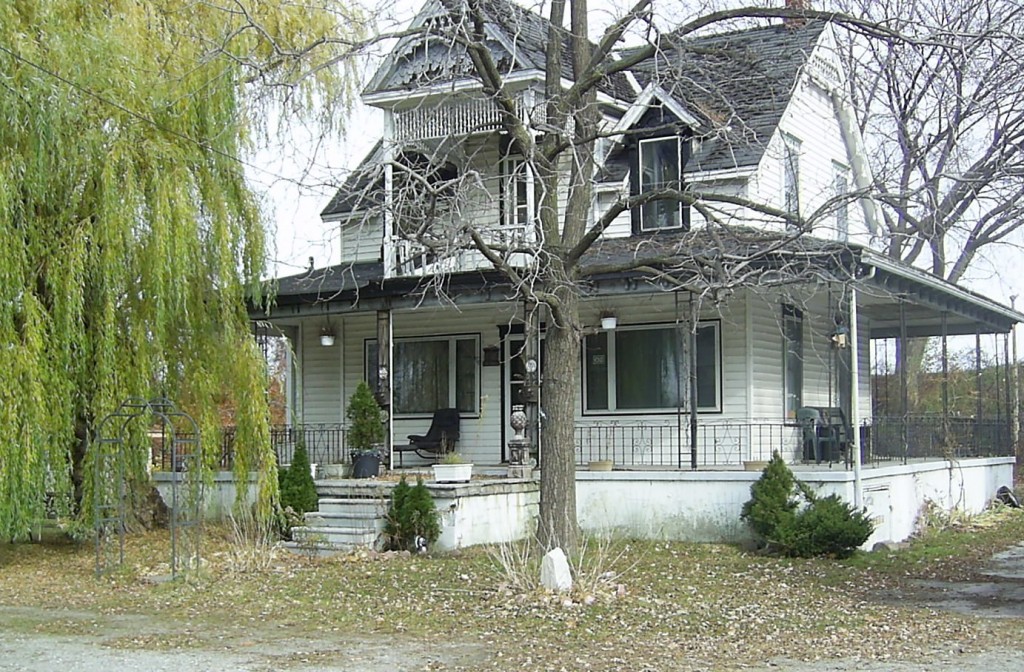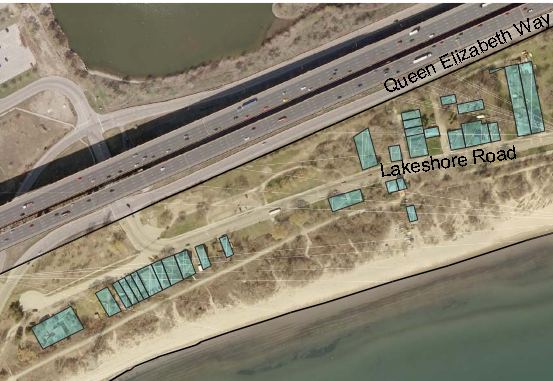Acquiring the private homes was seen as necessary to:
a) reduce the risk to public safety; b) reduce continuing property damage due to the severe and recurring storm and flood events that impact the beach area; c) increase the amount of well-distributed public open space along the Lake Ontario shoreline; and d) implement the vision of a publicly accessible waterfront throughout the Burlington downtown core and the greater Burlington Beach area.
Not much came of that plan.
Hamilton’s beach waterfront was different from Burlington’s in several respects. That city chose to buy up a lot of property until they ran out of money and created Centennial Park. The Hamilton experience certainly informs what Halton Region wants to do but the situations are significantly different.
In 1994 another Master Plan provided an update to the prior (1987) plan and generally maintained the objectives of that plan. Key elements of this Master Plan include: a) “stabilizing the primary dune through the planting of native dune grasses and vegetation; b) several pavilions were identified for the beach area; c) Great Lakes Science Centre; d) restricting access across the dune to raised boardwalks; and e) provision of other facilities including a recreation complex, restaurant, park office, and a clubhouse for board and catamaran sailors.”
The plan maintained the long-term vision for the park and beach area as public open space. It recommended leaving the west side of Lakeshore Road as residential in the short-term, while including only the east (lake) side properties as part of the imminent park development. Acquisition of the private / leasehold properties was ongoing at this time. The long-term vision for the park was not changed; its intent to be, in its entirety, public open space remained the same.
The CBR is relenting on the theme of “public open space”. It is not the only option. Toronto went through the same kind of debate.
Not long after the creation in 1953 of the Metropolitan Toronto Council it undertook to remove the Toronto Island community and replace it with parkland. The construction of the Gardiner Expressway had removed many acres of recreational land along the Toronto waterfront, and the Islands lands were to replace the acreage. In 1955, after the City had transferred the lands to Metro, the new Metro Parks Department started to demolish homes and cottages whose lease had expired or whose lease holders gave up their leases.
By 1963, all Islanders willing to leave the island had left and the remaining Islanders started to fight the plans of Metro to remove their homes. While demolitions still proceeded, the Islanders’ alderman David Rotenberg pushed the Islanders’ cause and the number of demolitions dwindled. In 1969, the Toronto Islands’ Residents Association (TIRA) was formed. Still, by 1970 only 250 homes, on Ward’s and Algonquin Islands, had escaped the bulldozer. The 1970s saw no further demolitions as the Metro Parks plans were thwarted by year-to-year leases and the changing of the guard on Toronto City Council to a group more sympathetic to the Islanders.
In 1973, City Council voted 17–2 to preserve the community and transfer those lands back to the City. However, Metro Council remained opposed and the Islanders started legal challenges to Metro’s plans in 1974 to delay Metro’s plans of expropriation. By 1978, Metro Council had won several legal battles and had obtained ‘writs of possession’ for the 250 homes. At the time, a minority provincial Progressive Conservative government was in place with both the Liberals and NDP opposition parties in favour of the Islanders and the Islanders appealed to the provincial government, winning more time when the province agreed to act as mediator between the City and Islanders and Metro.[15]
Matters came to a head on July 28, 1980, when a sheriff sent to serve eviction notices to remaining residents was met at the Algonquin Island bridge by much of the community, whose leaders persuaded the sheriff to withdraw.[16] On July 31, the community won the right to challenge the 1974 evictions. The Islanders lost the challenge, but by this time, the province had started a formal inquiry headed by Barry Swadron into the Toronto Islands. On December 18, 1981, the province of Ontario passed a law legalizing the Islanders to stay until 2005. This kept the lands in Metro’s ownership, to be leased to the City who would lease it to the Islanders.[17] Wrangling over the terms of the lease payments to Metro took several years.

It took Toronto Islanders’ more than 28 years to win their battle and be given the opportunity to purchase leases – today those Islands are community and a very safe place for the thousands of weekend visitors. Burlington has an opportunity to develop an imaginative solution to what gets done with Beachway Park. Will city council meet the challenge?
The community’s fight for survival was finally rewarded in 1993, when the Ontario Government passed the Toronto Islands Residential Community Stewardship Act, which enabled Islanders to purchase 99-year land leases from a Land Trust.
Do the 30 home owners have the stomach to take on this kind of a fight? Is there anyone on Council that will spearhead their battle?
It took years for that debate to work its way to the point where people on the Toronto islands now have long-term leases and a very stable community that is safe for everyone.
In the CBR the authors fudge their numbers when they say: The remaining lands, which amount to approximately 3.5 % of the land base within the entire Burlington Beach Regional Waterfront Park, are privately owned. Thirty residential properties remain in private hands in the area designated by Halton Region as a Regional Waterfront Park.
That 3.5% of the land is a true number – however it includes ALL of the land – both Spencer Smith Park and the Beachway. Including all the land a little mis-leading. The number that matters is what percentage of land does housing occupy in the Beachway along. It is quite a bit more than the 3.5% set out in the report.
These properties are interspersed with the publicly owned lands, creating a “checkerboard” effect of ownership. The condition and functionality of these residences varies and two of the properties are vacant. Various additions and renovations have occurred over time.

A magnificent looking building located at the end of LAkeshore Road, on a patch of land that is known as Lakeshore Road Crescent. If the tone of the Region’s Comprehensive Background report is any indication this building could meet the wreckers ball. Many other have met that fate.
Several building permits have been granted and some degree of development has taken place without the benefit of building permits. One of the residential buildings is listed on the Municipal Register as a non-designated heritage property, which means that the property owner would be required to provide the City with 60 days written notice of their intention to demolish.
Does this imply that the building would get an historical designation and have to be preserved?
The following observations are provided regarding ownership patterns in the beach area.

The private homes that are a large part of the discussion are in a cluster on the left – shown in light blue
Only 7 of the privately owned properties have been under the same ownership since the Region amended the Regional Official Plan in 1981 to accommodate the long-term vision of the Regional Waterfront Parks.

A close up view of the 30 homes that are given much mention in the Comprehensive Background report produced by the Region’s Planning department that will be a seminal document when the Region gets to the point where it decides what to do with the Beachway park properties.
16 of the 30 properties have been in the same ownership since 2000;
17 of the 30 properties have changed hands since the 1994 Master Plan was approved; and
23 of the 30 properties have changed hands since the 1980 Halton Region Official Plan waterfront vision was approved by Regional Council.
Property changes hands all the time –our newspapers are filled with properties for sale. The CBR seems to imply this is a problem.














